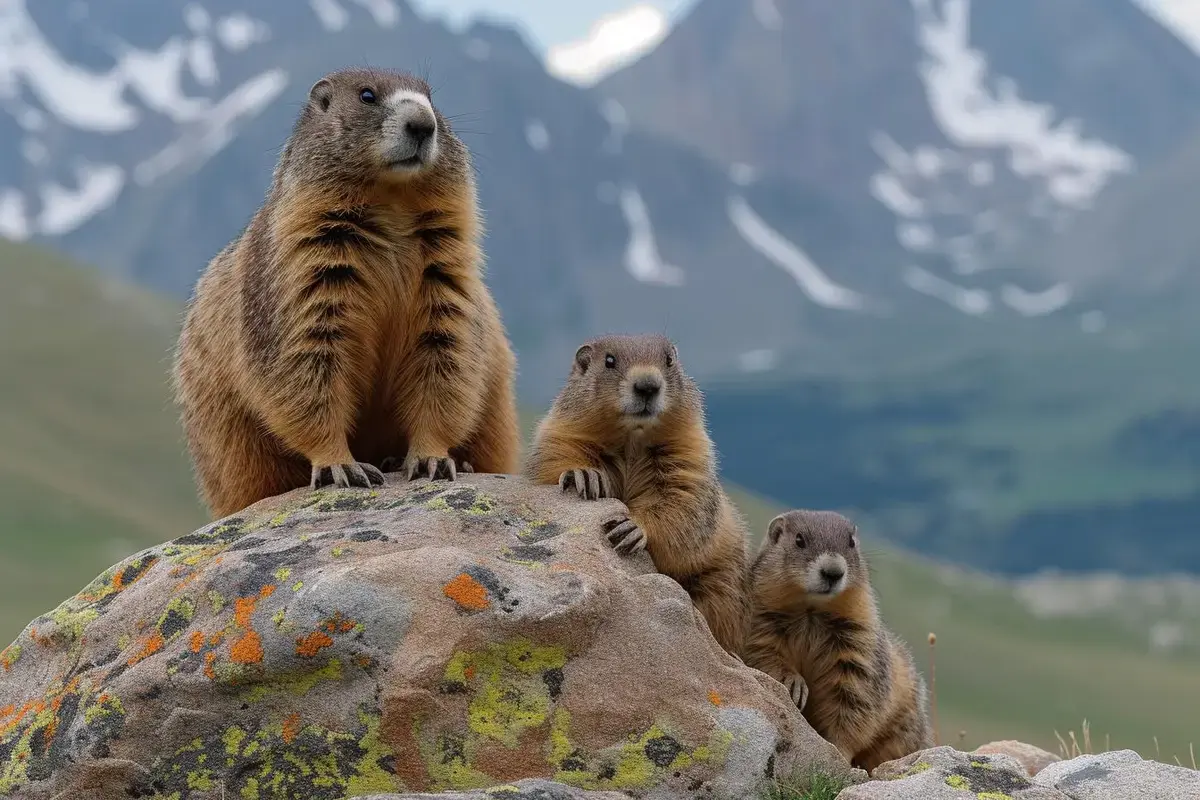The mountains in summer offer an exceptional natural spectacle, a refuge where wildlife can be observed in all their splendor. Among these alpine inhabitants, the marmot is an indispensable presence, enchanting nature lovers with its endearing appearance and characteristic whistles. However, this search for perfect images to share or keep as memories can become a trap for these charming rodents. Today we highlight why photographing these summit symbols can be harmful to them and how we can observe them while respecting their well-being.
The mountains and their encounters: a wonder to preserve
Summer transforms the mountains into a true theater of wild life, where every hiker hopes to experience a unique moment with nature. The mountain fauna, rich and varied, ventures out of its hiding places and offers nature lovers wonderful opportunities for observation. The marmots in particular become popular attractions, emerging from their burrows to enjoy the summer warmth. However, behind this fascination lies a responsibility: that of preserving the wild character and well-being of these animals in the face of our sometimes intrusive curiosity.
The marmots: charming ambassadors of the heights
The marmots are much more than simple alpine curiosities; they are essential to the mountainous ecosystem. This social rodentsrecognizable by their brown fur and plump silhouette, inhabit the meadows at altitude and play a crucial role in the biology of the mountains. Their presence feeds the food chain and their burrows aerate the soil, improving the health of the habitat. However, these ambassadors of the mountains are nowadays threatened by a seemingly harmless practice: the photography.
Behind the lens: the unknown consequences of photography
The search for the perfect photo is possible harmful consequences have for the marmots. The intrusive presence of photographers and the temptation to get too close disrupt their natural behavior. Flashes and sudden movements can stress these animals, causing them to become more cautious or flee, wasting precious energy reserves. In the long term, constant exposure to humans can reduce their ability to recognize natural predators, an impact that endangers not only individuals but also the survival of populations.
Observe without disturbing: responsible practices
It is possible to enjoy marmots while respecting their fragile environment. The tips for responsible observation include discretion and the use of binoculars to maintain a respectful distance. Instead of trying to capture the moment with a photo, we can choose to experience it fully, giving the marmots the rest they need for their natural development. By adopting these practices, we actively contribute to the protection of wildlife and enrich our own mountain experience.
A raven flies by at exactly the same time every day, and the reason is astonishing
A commitment for tomorrow: the protection of mountain fauna
Observing marmots is a privilege that comes with the obligation to appreciate the beauty and diversity of the mountain fauna retain. Every action counts in the conservation of these delicate ecosystems. By choosing to minimize our impact, raise awareness of our environment and support conservation initiatives, we play an essential role in the conservation of these natural treasures. Let us commit ourselves to being conscious observers so that future generations can enjoy the fascinating spectacle of mountain fauna.
In the spirit of harmonious coexistence with wild life, we remember that our passage in these natural spaces should be as light as possible. The mountains are a space of freedom for the fauna that lives there; let’s respect them by putting our cameras aside and opting for an authentic and respectful encounter with nature.







